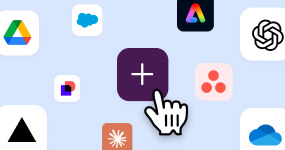What comes next? That’s the question the global workforce is wondering as we enter the summer months, a time when folks normally book vacation time and teams plan off-sites and company outings. In this state of prolonged remote work, how can organizations meet their employees’ needs and keep teams engaged?
“We’ve leapt forward five to 10 years,” says Dawn Sharifan, vice president of people at Slack. “There’s no going back to what was; there is only the future and the new normal. And we have this unique opportunity to define that future.”
Sharifan joined the Workday Podcast for a two-part discussion on keeping a remote workforce engaged—during the current crisis and in the future. In her conversation with Workday’s Jeremiah Barba, Sharifan outlined three steps to building and sustaining a strong organizational culture:
Identify and articulate your organization’s cultural values. You can start by filling out this statement:
- “Our culture is X, culturally, we do Y.”
- Repeat your organization’s culture loudly and often. Weave it into your communications, your celebrations and your accomplishments.
- Enforce your organizational culture. Allowing people to act in ways that contradict your culture creates confusion and breaks trust. And while everyone is distanced, trust is the most valuable commodity.
Take a listen to both podcasts on SoundCloud and Apple Podcast:
“Engaging at a Distance: Remote Workforce Management in a Crisis”
“The New World of Work: Looking to the Future”
Here are a few clips from the highlight reel, edited for clarity.
- “The first thing companies can do is really listen to their employees’ needs during this time. Have clarity on what adaptation or challenge you’re actually trying to solve. You probably don’t need every new technology tool out there all at once. Secondly, have a plan on how you will use the tool.” —Dawn Sharifan
- “At Slack, we encourage folks to spend time thinking through how to name your channels as a company, so it’s easy to navigate, or how to set your status so your colleagues know when you’re teaching your kids that new math, or going for that afternoon run, and expect a response when you’re done.” —Dawn Sharifan
- “I think we need to be clear in our expectations of ourselves and others, including the boundaries we’re setting up, so we don’t end up being online for 12 hours a day. We need our managers and our leadership to be clear on purpose and priorities, so we’re spending our time on the most important things. So the things that I think are really gonna stick are things like flexible work arrangement, distributed work, and an increase in the tools and technology that support that.” —Dawn Sharifan
- “When I reflect back on … the pace and intensity in which people were working, traveling, socializing, I know that things were out of balance … What if you could take a break in the day to go for a walk, or your kid’s school? I think this just creates an amazing opportunity for spaciousness and balance in our lives that I think leads to more creative thinking and more innovation, greater compassion for ourselves and others, and deeper connection to our communities. And to me, that is good for the bottom line of business.” —Dawn Sharifan






